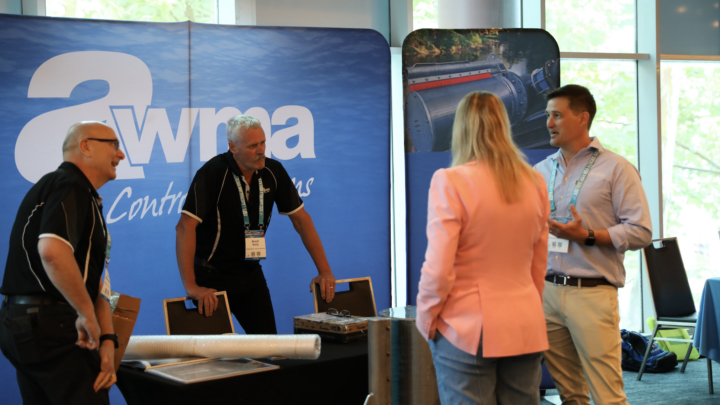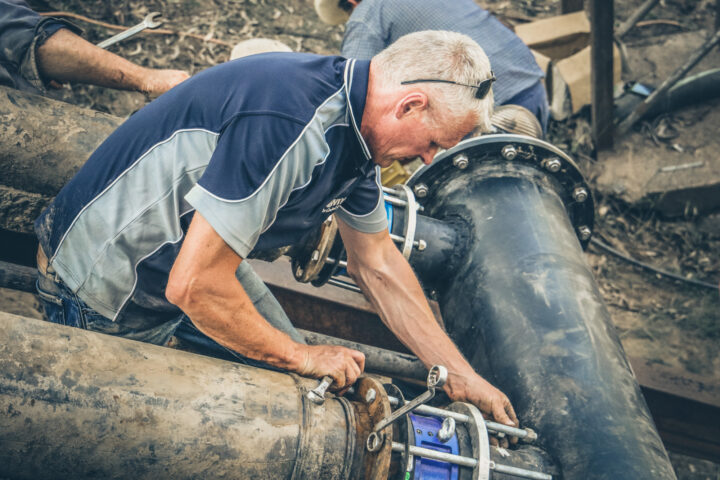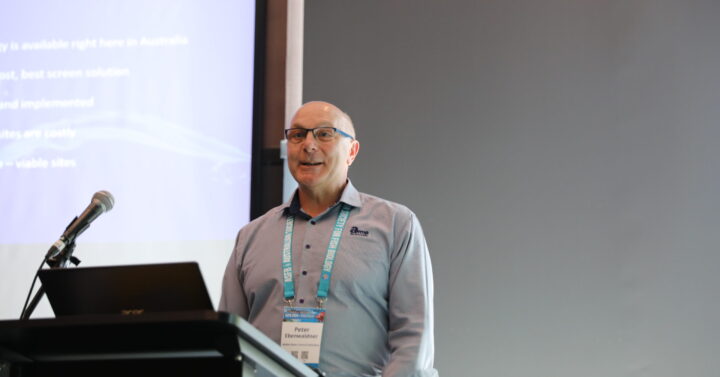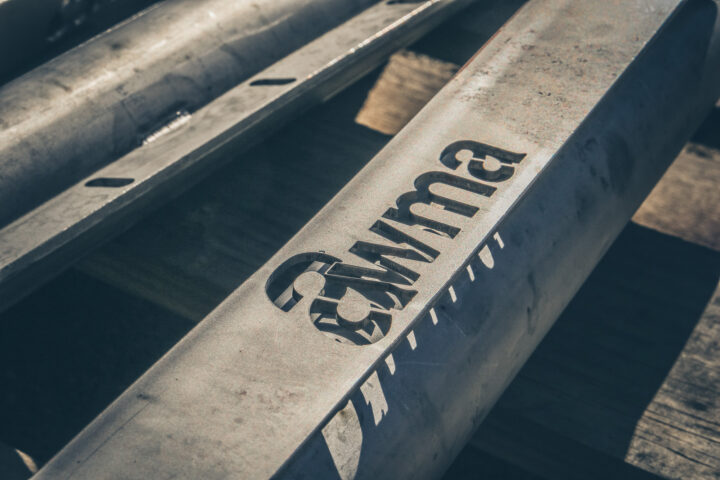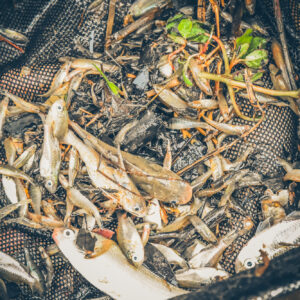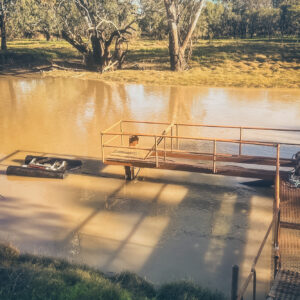Modern Fish Screens: Transforming Water Management in Australia
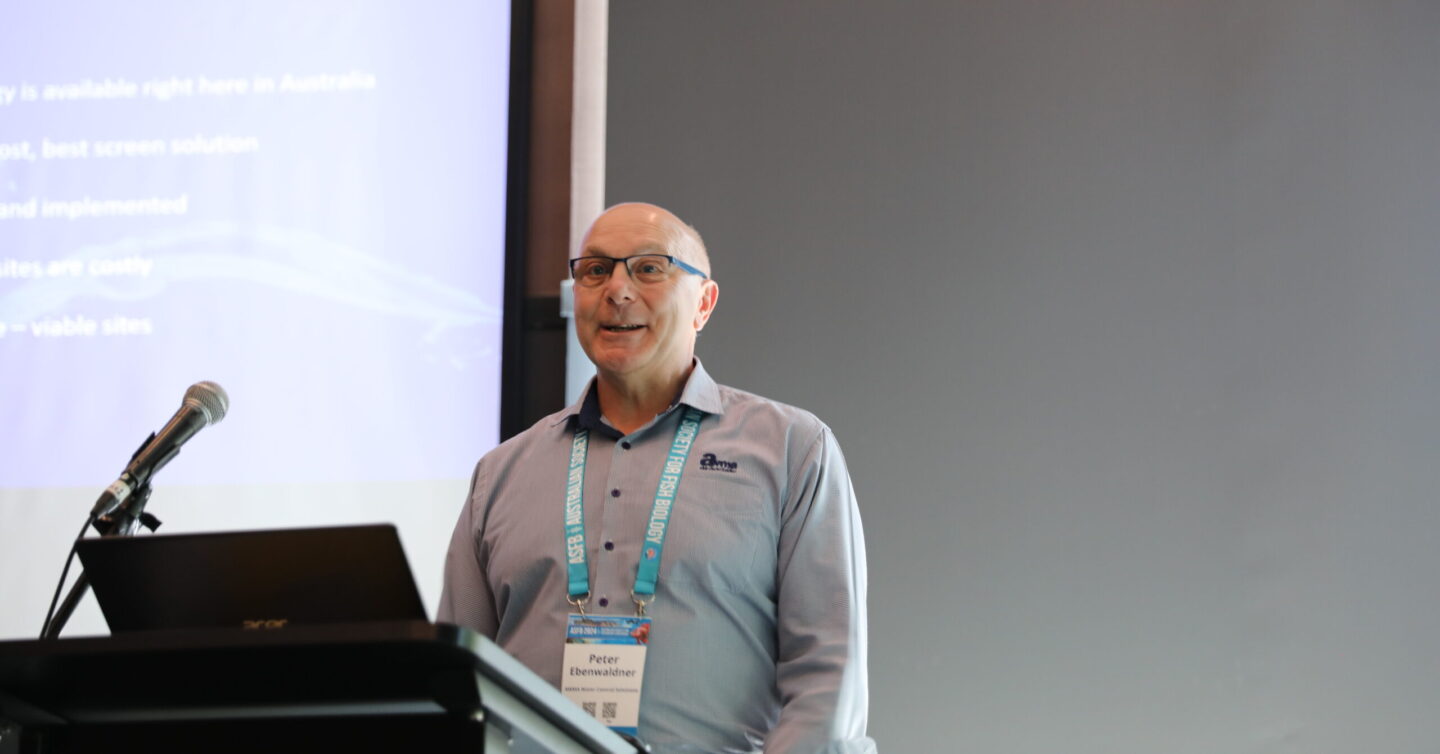
Peter Ebenwaldner’s experience in developing and promoting modern fish screens underscores a crucial aspect of sustainable water management: balancing the needs of irrigators with the protection of aquatic life.
During his presentation at the 2024 Australia Fish Biology Society Conference, Peter highlighted the evolution of fish screen technology in Australia, its benefits, and the challenges of implementing these systems in diverse environments.
From Traditional Screens to Modern Solutions
Traditional screens with large apertures—often up to 100 millimetres—have been a source of frustration for irrigators. These screens not only allowed fish and debris to pass through but also frequently clogged, reducing pump efficiency and requiring labour-intensive maintenance. As Peter explained, “Old traditional ‘screens’ are generally a swear word to irrigators.”
Modern fish screens address these shortcomings by incorporating advanced designs and materials. Key features of modern screens include:
- Fine Mesh Design: Screens now use two-millimetre wedge wire or up to three-millimetre perforated plates to prevent aquatic life from entering pumps.
- Improved Flow Distribution: Ensuring even water flow across the entire screen surface reduces hotspots and increases efficiency.
- Lower Approach Velocities: Modern screens limit water velocity to less than 0.1 metres per second, a significant reduction compared to traditional systems, ensuring fish can swim away safely.
- Integrated Cleaning Systems: Automated cleaning prevents biofouling and reduces maintenance.
These advancements not only protect fish but also enhance irrigation systems by reducing energy costs and infrastructure damage.
“Old traditional screens are generally a swear word to irrigators.” – Peter Ebenwaldner’
Meeting Diverse Challenges
Implementing modern fish screens often involves retrofitting existing sites, which presents a range of challenges. As Peter described, “Most of these old sites are retrofits, and they have a lot of complexity.” These complexities include:
- Remote Locations: Transporting crews and equipment to isolated sites adds significant costs.
- Variable Water Levels: Sites with fluctuating water depths require adaptable designs.
- Weather Impacts: Floods and extreme conditions can delay installations.
- Site Access and Power: Some sites lack grid power, necessitating solar-powered or diesel-driven systems.
Despite these hurdles, progress has been steady, with innovative solutions like cone screens and T-screens tailored to specific site conditions. For example, a gravity diversion site near Cohuna has successfully operated a 600-megalitre-per-day system since 2018 without interruption, showcasing the reliability of modern designs.
“We’ve actually been able to increase pump efficiencies, reduce energy costs, and ensure reliable water delivery while causing less damage to infrastructure.” – Peter Ebenwaldner
Collaboration: The Key to Success
One of the most critical aspects of fish screen adoption is collaboration. Engaging irrigators and understanding their needs has been fundamental to gaining trust and ensuring the practicality of installations. Peter emphasised, “Once we engaged the irrigators, we listened to their need for uninterrupted water supply and low-maintenance systems.”
Key requests from irrigators include:
- Retractable Designs: Allowing screens to be moved for maintenance or in case of failure.
- Integrated Systems: Simplifying operations by combining pumps and screens into cohesive units.
- Long-Term Reliability: Ensuring screens do not disrupt water delivery or compromise livelihoods.
These collaborative efforts have led to the development of bespoke solutions, such as solar-powered hydraulic systems in the Northern Basin, that align with both environmental and agricultural goals.
“Once we engaged the irrigators, we listened to their need for uninterrupted water supply and low-maintenance systems.” – Peter Ebenwaldner
Innovations in Action
The journey to modern fish screens has been marked by continuous learning and adaptation. For instance, sites like Sunday Creek in Victoria have pioneered greenfield installations where pump manufacturers and screen designers collaborate to create integrated systems. These systems not only protect aquatic life but also streamline installation processes, reducing costs for future projects.
Ebenwaldner shared examples of successful installations, including:
- Tenandra: A site with challenging terrain that required innovative solutions for vertical axial flow pumps.
- Rutherglen’s Sunday Creek: A greenfield site where modern design practices are being tested and refined.
- New Zealand Installations: Large-scale projects that comply with NIWA guidelines, demonstrating the scalability of advanced fish screen technology.
Benefits Beyond Aquatic Protection
Modern fish screens are more than a tool for environmental conservation; they also deliver tangible benefits to irrigators and farmers. These include:
- Increased Pump Efficiency: Reducing energy consumption and operational costs.
- Lower Maintenance Requirements: Automated cleaning systems reduce downtime and labor.
- Enhanced Reliability :Ensuring consistent water delivery to meet agricultural demands.
Ebenwaldner concluded, “We’ve got happy irrigators and fish and anglers as well. The benefits are shared across the board.”
A Vision for the Future
As fish screen technology evolves, lessons learned from installations are shaping the next generation of designs. By focusing on collaboration, innovation, and cost-effective solutions, the industry is paving the way for sustainable water management practices.
“Every installation is designed with the lowest-cost, best-screen solution in mind,” Ebenwaldner noted. “We’re continuously on the progression of reducing cost and delivering viable sites.”
The success of modern fish screens in Australia highlights the potential for this technology to balance ecological preservation with agricultural productivity, ensuring a sustainable future for both water users and aquatic ecosystems.
